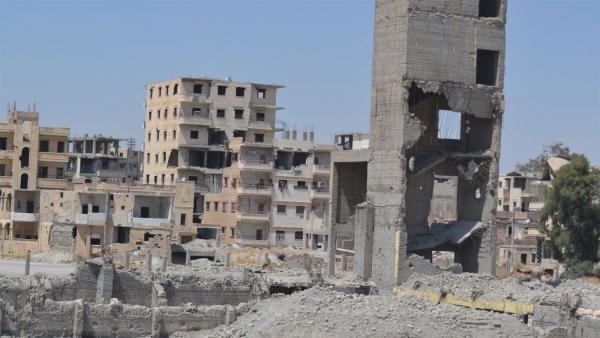On 6 February 2020, Human Rights Watch (HRW) published a report urging governments to, by means of a political declaration, avoid using explosive weapons with wide-area effects in populated areas. Although not binding, this could set out a new code of conduct for states, while clarifying international humanitarian law, which currently bans the use of weapons and attacks causing indiscriminate or disproportionate loss to civilians. It does not, however, outline a specific prohibition on explosive weapons in populated areas (EWIPA).
The urgency for the adoption of a political declaration on the issue is not new. In fact, a momentum towards this achievement has been building over the past ten years. Namely, meetings involving European, African and Latin American countries were convened respectively in Austria in 2015, in Mozambique in 2017 and in Chile in 2018. Furthermore, in November 2018, a joint statement of the United Nations General Assembly on the need for a political declaration to limit these weapons’ employment was signed by 50 countries. This was succeeded by a joint appeal initiated by the UN Secretary-General Antonio Guterres and the president of the International Committee of the Red Cross, Peter Maurer, in favour of a political declaration and the establishment of standards for the use of EWIPA. Ultimately, Austria started a process to establish a political declaration in October 2019 which involved 133 countries and which led Ireland to convene a series of diplomatic consultations on the declaration. In this context, the most recent meeting was convened in Geneva on 10 February 2020 to comment and review a draft of the declaration with a view to a possible future endorsement.
As background for this meeting and basis for the statement released, Human Rights Watch (HRW) and Harvard Law School’s International Human Rights Clinic (IHRC) published an analysis of the draft of the declaration. According to this analysis, the draft focuses on the use of explosive weapons in populated areas, recognises its harmful effects, strengthens the necessity to protect civilians and provides for means to implement such protection as well as to improve relevant laws and data collection. Nonetheless, some amendments are still needed to guarantee and improve civilians' protection in relation to the use of EWIPA. Namely, the report demands clearer presumption to avoid the “use, in populated areas, of explosive weapons with wide area effects - given the foreseeability of indiscriminate harm- as well as a stronger and more inclusive commitment to assist victims. Ultimately, it suggests that immediate and long term echoing harmful effects of the use of EWIPA should be duly emphasized and a framework for follow-up meetings and to review relevant laws should be established.
The rationale behind this focus on explosive weapons with wide-area effects derives from their devastating effects on civilians and the country’s infrastructure. In fact - according to Action on Armed violence - nearly every year of the past ten years civilians suffered over 90 percent of the casualties when explosive weapons were used in populated areas. More specifically, explosive weapons with wide-area effects may have a large destructive radius, be inherently inaccurate, or deliver multiple munitions at the same time. Independently of their target, their accuracy and the scope of their impact, these three categories of weapons have all caused extensive and disproportionate harm on civilians and civilians’ infrastructure. Indeed, these weapons – including air-delivered weapons, some rockets, and large-caliber artillery, barrel bombs- have been consistently employed in Syria, Iraq, Yemen, Israel/Palestine, and Sudan and Afghanistan causing thousands of civilian deaths, injuries and property damage.
The long-term consequences of explosive weapons with wide-area effects are equally concerning as they envisage destructive effects on civilian infrastructures, including health facilities, water supplies, sewage systems, educational facilities causing long-lasting consequences, such as spread of diseases and children being forced to terminate their education. Moreover, these echoing consequences disproportionately affect women and vulnerable populations and have triggered internal and across borders displacement, which has in turn heightened the risk of sexual violence, human trafficking and child marriage. Finally, further risks are introduced by the contamination of areas with explosive remnants of war. The above-mentioned physical harm is then matched by a psychological harm that civilians in these situations experience.
Therefore, as some progress seems to be under way, a common pledge is urgently needed not only to regulate, but also to prevent the use of these indiscriminate weapons from further causing devastating immediate and long-term effects on civilians in populated areas.
To read more, visit:
https://www.hrw.org/news/2020/02/06/explosive-weapons-devastating-civilians
http://www.inew.org/wp-content/uploads/2018/12/Santiago-Communique-EWIPA.pdf
https://www.gichd.org/fileadmin/GICHD/about-us/media/Maputo_Communique_Final_Eng.pdf
https://www.hrw.org/news/2020/02/10/statement-consultations-elements-political-declaration-use-explosive-weapons
Author: Camilla Lavino; Editor: Aleksandra Krol




